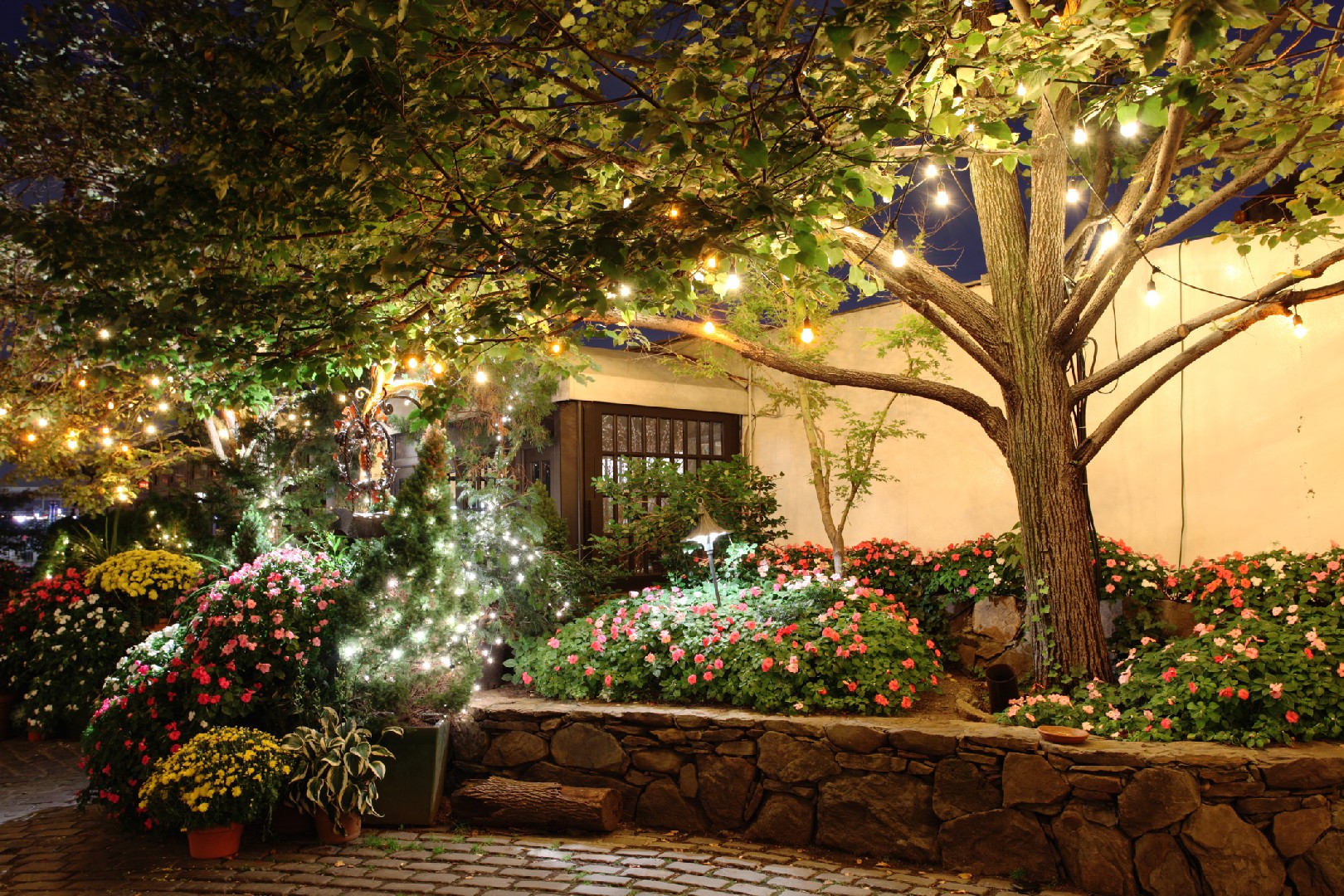![Rectangle]()
Fundamentals of Landscape Lighting Design
To effectively illuminate your garden and create a stunning outdoor space, it is important to understand the fundamental principles of landscape lighting design. By utilizing different lighting techniques, maximizing light efficiency, applying light layering, and creating a thoughtful lighting plan, you can achieve the desired ambiance and highlight the beauty of your garden.
One of the key techniques in landscape lighting design is spotlighting. This involves placing a light fixture strategically to highlight a specific feature or area in your garden. For example, you can use spotlights to showcase a beautiful tree, a piece of artwork, or a focal point in your landscape design. By directing the light in a focused manner, you can draw attention to the desired element and create a dramatic effect.
Path lighting is another important technique to consider. By placing lights along pathways, walkways, or stairs, you can enhance both the safety and aesthetics of your garden. Illuminate the path with soft, low-intensity lights to guide your guests and create a magical ambiance. Consider using fixtures with warm-toned bulbs to create a cozy and inviting atmosphere in the evening.
Moon lighting is a technique that can add a touch of elegance and mystery to your garden. By placing lights high in trees and aiming them downward, you can create a natural moonlight effect. This technique is particularly effective for large open spaces or areas with tall trees. The soft, diffused light creates a serene and enchanting atmosphere, perfect for outdoor gatherings or simply enjoying the beauty of your garden at night.
Maximizing light efficiency is crucial in landscape lighting design. When choosing light fixtures, consider their intensity, direction, and color. Use LED bulbs, as they are energy-efficient and have a long lifespan. Position the fixtures strategically to avoid wasting light and create the desired effect. For example, to minimize glare, angle the fixtures downward and shield the light source.
Light layering is a technique that adds depth and interest to your garden. By combining different types of lighting, such as uplights, downlights, and pathway lights, you can create a multi-dimensional effect. Experiment with different fixtures and positions to highlight different elements in your garden, such as plants, architectural features, or water features. This technique allows you to create a dynamic and visually appealing outdoor space.
Creating a lighting plan is essential to ensure a well-designed and cohesive lighting scheme. Consider the power source and setup of the lights. Determine whether you will be using low-voltage or line-voltage lighting and plan accordingly. Sketch out the layout of your garden and mark the desired areas for lighting. Take into account the focal points, pathways, and functional areas. By planning ahead, you can avoid unnecessary installation issues and ensure a seamless integration of lighting into your garden design.
In conclusion, understanding the fundamentals of landscape lighting design is key to illuminating your garden effectively. By utilizing different techniques such as spotlighting, path lighting, and moon lighting, you can create the desired ambiance and highlight the beauty of your garden. Maximizing light efficiency, applying light layering, and creating a thoughtful lighting plan are crucial steps in achieving a visually stunning and functional outdoor space. So go ahead and start transforming your garden into a well-lit oasis that you can enjoy day and night!





